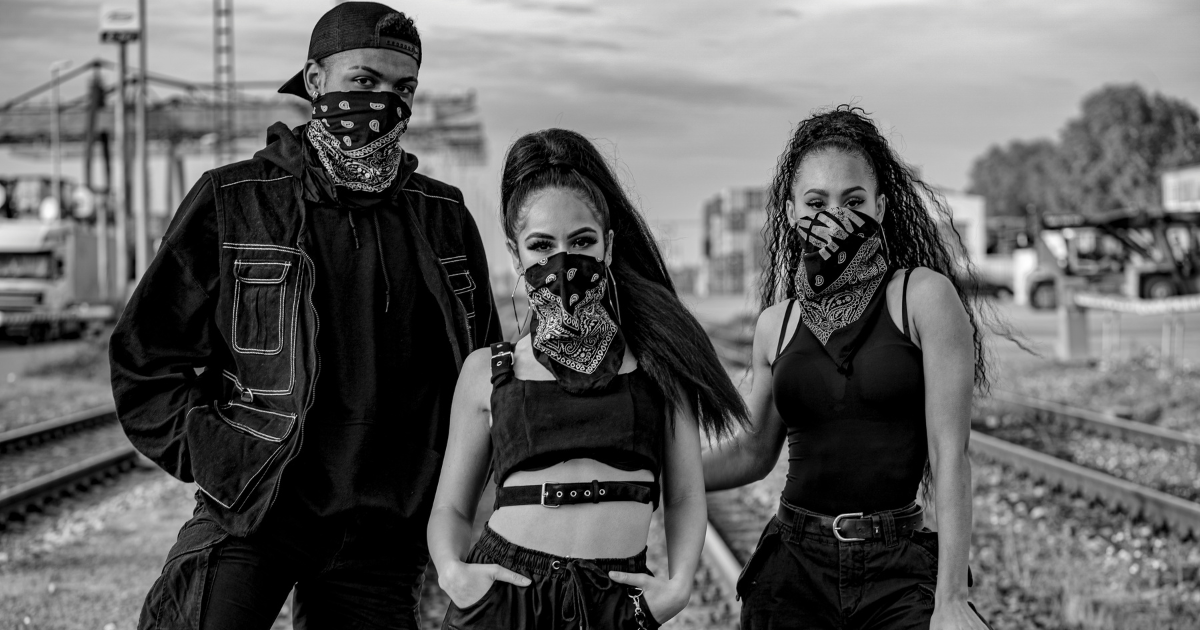Introduction
Virgil Abloh was a visionary who redefined the boundaries of luxury fashion. One of his biggest inspirations was architecture, a field He studied at the Illinois Institute of Technology (IIT). Abloh was particularly moved by Rem Koolhaas’s building at IIT, which sparked his interest in fashion. His background in architecture informed his approach to fashion, allowing him to think about design in terms of space and structure much like an architect would, but using textiles and models instead of paper and concrete. Understanding the concept of space, quality of materials, and the process closely parallels how revolutionary fashion designs and trends are made. Additionally, “both fashion and architecture express ideas of personal, social and cultural identity”, something that Abloh delved into when creating designs for Off White which were inspired by hip-hop culture, and predominantly participated in by Black Americans (Hodge).
Career Trajectory
Though Abloh is well known for his brand, Off White, many experiences added to bring him the wisdom he needed to make Off White such a success in the fashion world. Abloh stepped foot in the fashion industry in 2009 when he interned at Fendi in Rome with Kanye West. In the same year, Abloh and West attended the Paris Fashion Week. Abloh, West, and other friends were photographed outside the Comme des Garçons Homme show wearing unconventional pieces such as leopard leggings and cowboy boots. After interning at Fendi, Abloh became a Creative Director at Donda, West’s creative agency. In this position, Virgil worked on several iconic projects, one of them being the cover of Watch The Throne made in 2011 with Riccardo Tisci, an album that earned him a Grammy nomination.
Streetwear meets High Fashion
Things kicked off for Abloh after launching Off White, which was branded as “the gray area between black and white”. This name is well fit for the ambiguity that many people felt around the brand and its products. Bystanders struggled to grasp the concept of streetwear being associated with luxury. This led to Abloh making a statement; “This isn’t a streetwear brand. This isn’t a contemporary brand. This is designer, just the same way that X, Y, Z are designers, where you say their name and it carries this whole esteem and emotion to it”. Virgil Abloh made it clear that the style of clothes did not define the category they fall into. What we refer to now as “streetwear” can also be considered high fashion and in the luxury market. Through Off White, Abloh articulated that luxury is not limited to preppy, fancy items but is reflected in the quality, thoughts, and emotions put into birthing such a commodity. For far too long, streetwear faced criticism for lacking sophistication or simply being a style that “trendy teenagers” opted for. After Abloh made space for Off-White as a high fashion and luxury brand, there was a wave of de-stigmatization around streetwear, ultimately gaining respect and perhaps, “another chance”. After the launch of Off White, luxury brands like Louis Vuitton implemented hip-hop-inspired styles; Fendi, which initially rejected Abloh’s leather joggers prototype in 2009, capitalized on his very idea in 2013. With all that said, Abloh did not need brands like Louis Vuitton and Fendi’s participation to understand that streetwear is luxurious. As a result of this shift, many fashion enthusiasts realized streetwear is a way to carry yourself unconventionally, a way to make a statement that high fashion has no restrictions. Streetwear was no longer a style merely associated with hip hop but became an internationally recognized niche of clothing. Now, street wear has become the norm not only for youth, but anyone who wishes to express themselves in such a manner.
Philanthropy
In 2018 Abloh was named artistic director of Louis Vuitton’s menswear ready-to-wear line. This was a significant event in high fashion as Abloh was the first person of African descent to lead the brand’s menswear line. Abloh’s accomplishment gave inspiration to many other proteges from marginalized communities to pursue their dreams in the fashion industry, no matter how impossible they may have seemed. Additionally, looking back at 2009 Paris Fashion Week, Abloh said in an interview, “We were a generation that was interested in fashion and weren’t supposed to be there”, meaning Abloh not only dealt with the fashion industry’s inevitable high barriers to entry but racial discrimination as well. The culmination of such events led Abloh to actualize his advocacy for equity and inclusion in the fashion industry through a scholarship fund. It is named “Post-Modern” which to this day, identifies promising students of Black, African-American, or African descent and financially supports their aspirations to enter and participate in the fashion industry.
Legacy
Abloh had a full circle moment in 2021 when his designs for Louis Vuitton hit the runway at Paris Fashion Week, the same place where Abloh was a nobody back in 2009, photographed in his eye-catching cyan blue vest and yellow sneakers. Unfortunately, In 2019, Abloh was diagnosed with cardiac angiosarcoma which took his life in 2021. Abloh lived a life filled with passion for his work and induced a collaborative environment within the fashion industry, encouraging new talent and collaborating with creatives to establish new intersections. His collaboration with brands such as Champion, Nike, Sunglass Hut, and Ikea demonstrated his ideology that innovation comes from blending diverse perspectives and areas of expertise. As Selby Drummond, the chief brand officer at Bumble mentioned, “his work was a paradigm shift in an industry which can be very protective and territorial”. Ultimately, Abloh Proved that having unconventional thoughts and ideas and collaborating to bring those ideas to reality presents more opportunities for success and recognition than adhering to the norm and working independently in a cut-throat environment. This legacy which Abloh left behind continues to inspire many creatives to question boundaries and redefine high-fashion.
Author Name: Kavya Arumili
References:
Friedman, Vanessa. “Virgil Abloh, Path-Blazing Designer, Is Dead at 41 (Published 2021).” The New York Times, 3 December 2021, https://www.nytimes.com/2021/11/28/style/virgil-abloh-dead.html. Accessed 8 August 2024.
Gallagher, Jacob. “Virgil Abloh Left an Outsize Impact on Global Fashion and Culture.” The Wall Street Journal, 30 November 2021, https://www.wsj.com/articles/virgil-abloh-left-an-outsize-impact-on-global-fashion-and-culture-11638145499. Accessed 8 August 2024.
Hodge, Brooke, and Patricia Mears. Skin and Bones: Parallel Practices in Fashion and Architecture. Museum of Contemporary Art, 2006. Accessed 8 August 2024.
Martino, Francesco. “The story of the internship of Kanye West and Virgil Abloh at Fendi.” nss magazine, 16 February 2021, https://www.nssmag.com/en/fashion/25226/kanye-west-virgil-abloh-stage-fendi. Accessed 8 August 2024.
Parisi, Danny, et al. “Virgil Abloh ‘changed the shape of the luxury fashion industry.’” Glossy, 29 November 2021, https://www.glossy.co/fashion/virgil-abloh-changed-the-shape-of-the-luxury-fashion-industry/. Accessed 8 August 2024.
Ton, Tommy. Vogue, 2009, https://www.vogue.com/article/fashion-runway-kanye-went-paris-fashion-week-ready-to-wear-2017. Photograph.

















